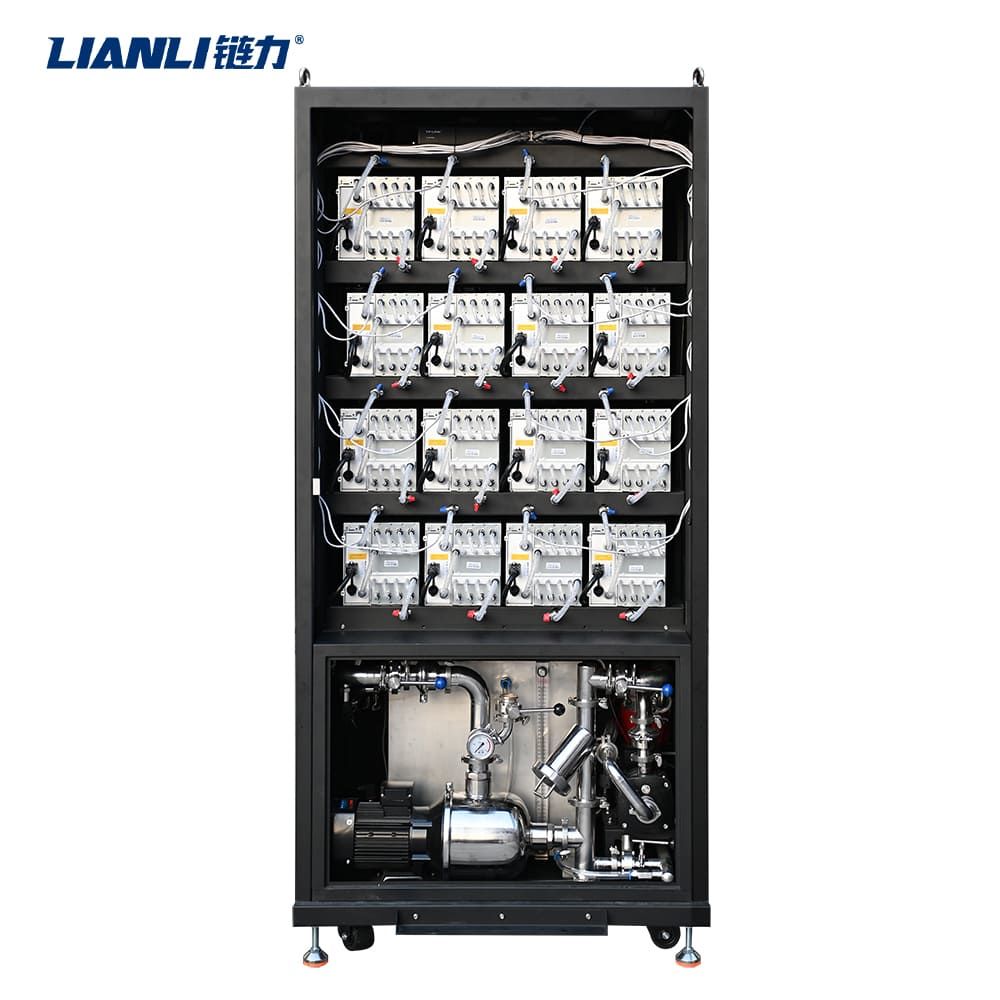Cryptocurrency Mining: How It Works — Detailed Guide(2025)
2025年10月10日
Cryptocurrency mining lies at the heart of how many blockchains (especially Proof of Work chains like Bitcoin) maintain security, validate transactions, and mint new coins. For newcomers and industry observers alike, understanding mining is essential to grasp the economics, risks, and technical challenges of crypto networks. In this guide, we’ll walk through how mining works, what it takes to run a mining operation or company, and what the major trade-offs are today.
What Is Crypto Mining?
“Mining” is an analogy to extracting precious metals: in crypto, miners expend effort and resources (mainly electricity and hardware) to validate blocks and release new coins.
More precisely, cryptocurrency mining is the process used by Proof-of-Work (PoW) blockchains in which participants (miners) deploy computing power to solve cryptographic puzzles. The first miner to solve a puzzle gets the right to add a new block of transactions to the ledger and is rewarded with newly minted coins plus any transaction fees.
Mining thus serves two critical roles:
Transaction validation and ordering — ensuring no double spending, enforcing consensus, and adding new blocks.
Issuance of new coins — the protocol’s mechanism for distributing token supply over time.
Because mining is decentralized, many miners compete simultaneously. The protocol’s difficulty adjusts over time so that blocks are found at roughly fixed intervals (for Bitcoin, ~10 minutes) regardless of total computational power (hashrate) deployed.
How Mining Works (Step by Step)
Here’s a simplified breakdown of the core mechanics:
Collect pending transactions
Miners pick a batch of unconfirmed transactions from the mempool, verifying that each transaction is valid (e.g. correct signatures, funds not double spent).
Build a candidate block
The miner packages those transactions, includes a special “coinbase” transaction awarding themselves the mining reward, and references the previous block’s hash.
Set up the cryptographic puzzle (hash target)
The miner must find a nonce (a varying number) so that the hash of the block header (twice SHA-256 in Bitcoin’s case) is below a dynamically determined target threshold.
Brute-force search
The miner repeatedly tries different nonce values (and sometimes additional extra nonce fields) and recomputes the block hash. This is a trial-and-error process: many millions or billions of hashes per second are evaluated.
Success: block solved
If a hash value meets the difficulty target, the miner broadcasts that block to the network. Other nodes verify its validity (transactions valid, hash under target, correct reference to prior block), then accept it into the chain if all checks pass.
Reward and fees
The miner collects the new coin issuance (block reward) plus transaction fees embedded in the block. That reward is added via the coinbase transaction.
The process then repeats for the next block, with updated difficulty as more or less hash power participates.
Because of the computational arms race, mining is not about cleverness but sheer scale. The chance of a miner solving a block is proportional to the fraction of total network hashrate they control.
Key Concepts & Metrics
Hashrate
Hashrate measures how many cryptographic hashes a miner can compute per second. The more hashrate, the greater the chance of success. Across the entire network, any increase or decrease affects block difficulty.
Difficulty Adjustment
Mining difficulty is automatically adjusted (for Bitcoin, roughly every 2,016 blocks) to keep block time stable (≈10 minutes), accounting for increases or decreases in total hash power.
Block Reward & Halving
Bitcoin’s block reward started at 50 BTC per block and undergoes “halving” events every ~210,000 blocks (≈ every 4 years). As of April 2024, it’s 3.125 BTC per block.
This scheduled deflation constrains supply issuance over time.
Mining Pools
Due to high variance (it might take a long time for a solo miner to win a block), many miners join mining pools—groups that aggregate hashing power and distribute block rewards proportionally to contribution. (en.wikipedia.org)
Common payout schemes include Pay-Per-Share (PPS), PPLNS, and proportional models. (en.wikipedia.org)
Power & Efficiency
Electricity cost is often the largest ongoing expense for miners. Efficiency (joules per hash) is critical. Modern miners use specialized hardware (ASICs) rather than general CPUs/GPUs.
Security & 51% Risk
As more hash power secures a network, it becomes harder to attack. The most noted theoretical risk is a 51% attack: if a miner or coalition controls over 50% of total hashrate, they could rewrite recent blocks or double-spend. However, in practice this is extremely expensive and risky.
Starting a Crypto Mining Company / Operation
Running a mining company is not just about buying hardware. Below are the practical considerations.
Infrastructure & Capital Investment
Hardware procurement: Acquire ASICs (or GPU rigs if you mine altcoins). High-performance devices cost thousands, and lead times can be significant.
Facilities: Secure a site with clean electrical supply, ventilation or cooling systems, and network connectivity.
Power supply: Many large mines negotiate industrial power contracts or locate near cheap energy sources (hydro, geothermal, etc.).
Cooling: Mining generates significant heat. Solutions include air cooling, liquid cooling, immersion cooling, or placement in cool climates.
Network & connectivity: Low-latency, stable connections to the mining pool or blockchain nodes are essential.
Operational Costs & Overheads
Electricity (often 60–90% of cost)
Maintenance and repair
Cooling and HVAC systems
Monitoring, staff, security, and infrastructure management
Replacement/obsolescence: Hardware becomes outdated or less competitive over time
Mining Strategy
Solo vs. Pool vs. Cloud contracts: Most firms prefer pooled mining for steady revenue.
Choice of coin: Bitcoin is dominant, but many operations also mine other PoW altcoins depending on profitability and hardware flexibility.
Scaling & modular expansion: It’s common to gradually scale as revenue allows.
Diversification: Some miners hedge risk by operating in multiple locations or coins.
Legal, Regulatory & Environmental Risks
Permitting: Some jurisdictions require special permits or licensing.
Regulation: Laws around crypto and mining are evolving; some places ban or restrict operations.
Taxation: Mining yields are often taxable both as income and later capital gains.
Environmental scrutiny: High energy draw invites regulatory and public pushback; many miners incorporate renewables or carbon offsets.
Grid stability and energy policy: Politically or technically-driven electricity bans or restrictions can pose great risk.
Profitability & Investment Calculus
To estimate profitability, a mining company typically runs models factoring:
Hashrate of hardware
Electricity cost (per kWh)
Efficiency (watts per hash)
Network difficulty and projected changes
Block reward and fees
Capital expenditure amortization
Operational expenses
Because difficulty and reward change over time, returns are probabilistic and can vary. Many companies conduct sensitivity analyses to see worst/best cases under different crypto prices and difficulty trajectories.
Challenges, Trends & Future Outlook
Centralization Pressures
Mining ecosystems tend to concentrate among those with scale, access to cheap power, or geographic advantages. That centralization erodes decentralization goals.
Energy & Environmental Concerns
Crypto mining draws criticism for high power consumption and carbon emissions. Many new operations actively seek renewable energy or carbon-neutral strategies to mitigate environmental impact.
Technological Advances
More efficient ASICs continue to emerge.
Cooling and energy optimization (immersion, liquid cooling) gain traction.
There is research into quantum-aided or hybrid approaches to lower energy use in mining.
Some blockchains are exploring transition to less energy-intensive consensus models (e.g., Proof of Stake), reducing reliance on mining.
Regulatory Shifts
Some countries have banned or restricted mining (e.g. China, some U.S. states), others are encouraging it with incentives. Miners need to stay alert to laws around electricity use, crypto taxation, and licensing.
Market Volatility
Crypto prices (and thus rewards in fiat terms) are volatile. A drop in price or an increase in difficulty may render once-profitable rigs unprofitable.
Conclusion
Cryptocurrency mining remains a foundational mechanism for many PoW blockchains, enabling security, consensus, and token issuance. But mining today is a capital-intensive, energy-dependent, and operationally complex industry. A successful mining company must optimize hardware efficiency, access cheap power, and manage regulatory, environmental, and financial risk. For many participants, joining a mining pool or leasing hash power might offer a lower-cost entry path. Modern operators are increasingly adopting Crypto Mining Liquid Cooling—including rack and chassis solutions from LianLi—to improve thermal performance, boost efficiency, reduce noise, and extend hardware lifespan while lowering environmental impact and enhancing operational reliability and scalability.

FAQs — Crypto mining, mining pools & liquid cooling
Q1: What is cryptocurrency mining and how does it work?
A: Cryptocurrency mining (for Proof-of-Work chains like Bitcoin) is the process where computers solve cryptographic puzzles to validate transactions and add new blocks to the blockchain. Miners run specialized hardware that computes huge numbers of hashes per second; the first miner whose block header hash meets the network target broadcasts the block and collects the block reward plus transaction fees.
Q2: What are mining pools and should I join one?
A: Mining pools combine many miners’ hashing power to produce steadier, more frequent payouts that are split proportionally to contributed work. Solo mining can be high-variance (rare big wins), while pools give predictable smaller payouts; choice depends on your hardware scale, risk tolerance, and fee structures (PPS, PPLNS, proportional).
Q3: What is crypto mining liquid cooling and why use it?
A: Crypto mining liquid cooling replaces or supplements air cooling with liquid (direct-to-chip, cold plates, immersion) to move heat away far more efficiently. Benefits include higher sustained hash rates, lower noise, reduced thermal throttling, longer hardware life, and better energy efficiency in dense racks. Brands like LianLi offer chassis and liquid-cooling solutions tailored to high-density rigs, making liquid cooling an attractive option for serious, large-scale operations.
previous page
previous page
Recommended news
A clear, 1,100-word guide to how cryptocurrency mining works: Proof-of-Work, hashrate, pools, profitability, and practical steps to start mining.
Practical guide comparing air cooling and immersion for Bitcoin mining cooling systems—trade-offs, best practices, and a look at Lianli’s liquid cooling offering.















